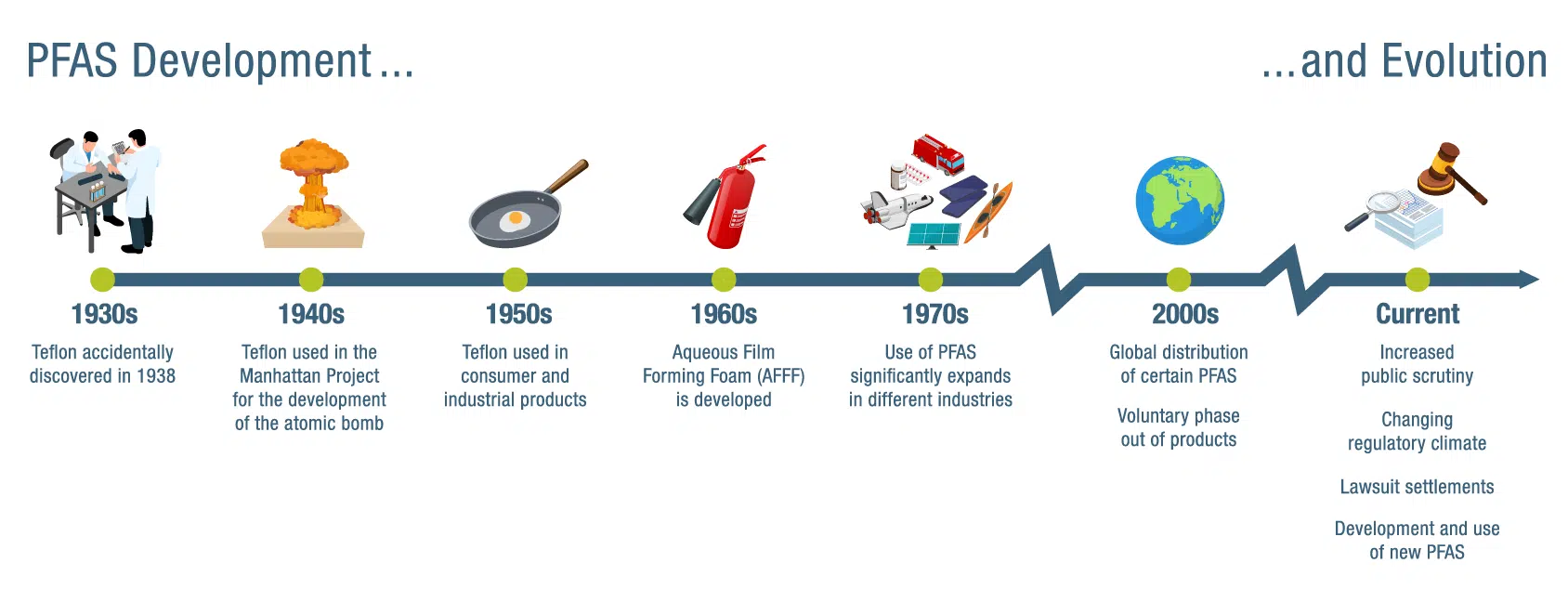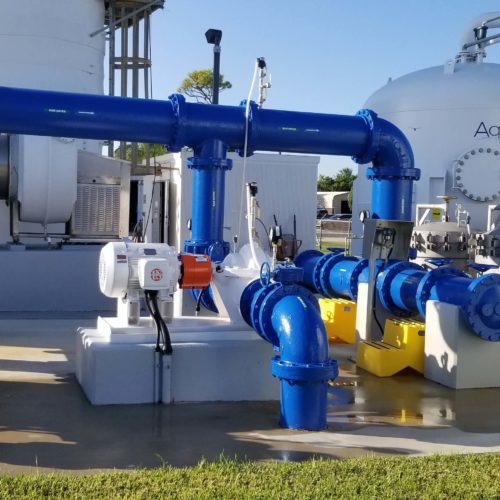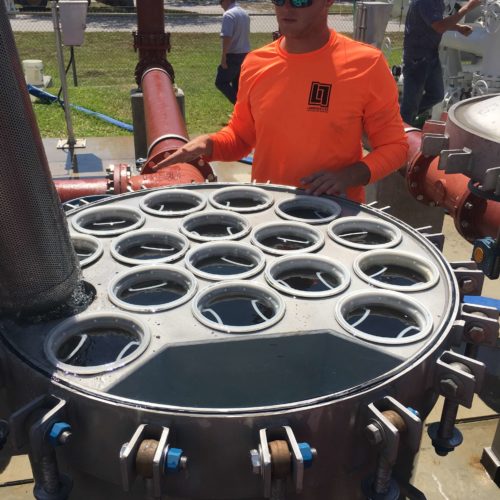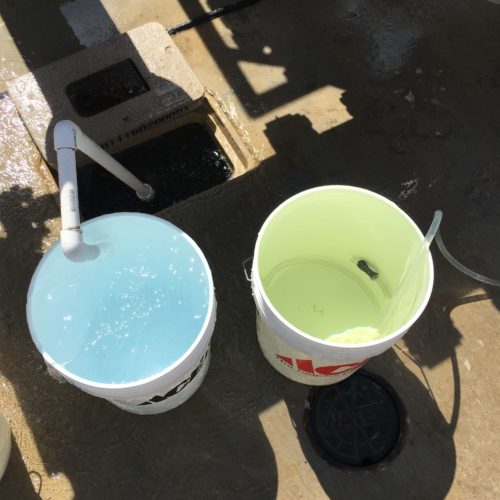- April 13, 2020
- Perspectives, Trending Topics
Nothing Lasts Forever, Except PFAS: What Are They and What Can You Do About Them?
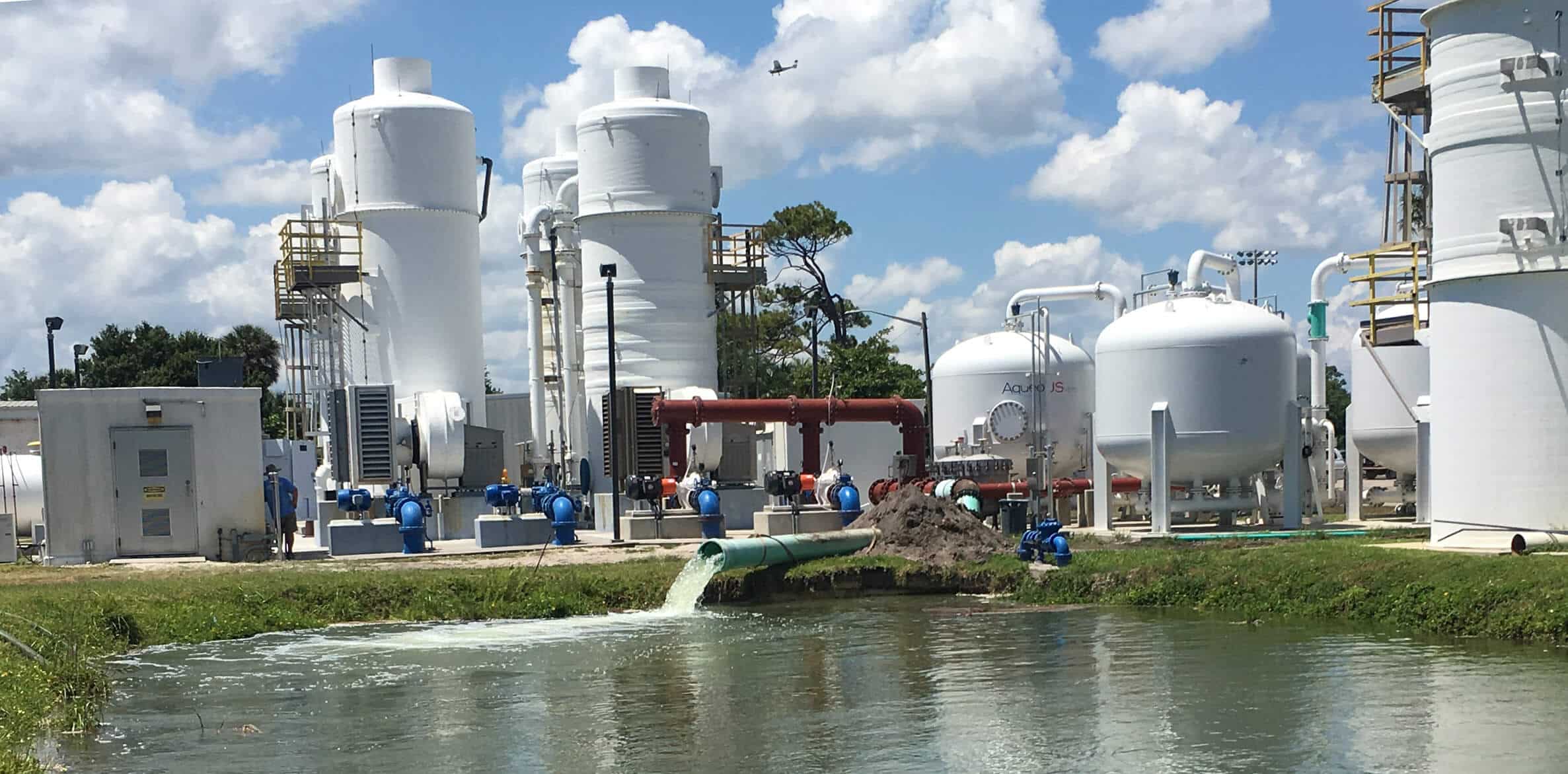

Mark Miller, PE
Water/Wastewater Engineering Consultant
PFAS (Per- and polyfluoroalkyl substances) have garnered the attention of the media, the engineering and scientific communities, municipalities, and state and federal authorities. We sat down with Kimley-Horn’s Mark Miller, PE, who designed the largest water treatment system in the U.S. for removing PFAS. In this interview, he shares more about this trending topic, explaining what PFAS are, why you should care, and what’s being done to mitigate their effects.
What are PFAS?
PFAS are a group of man-made compounds that have been linked to numerous health issues and are found in products such as Teflon cookware, pizza boxes, dental floss, stain repellents, and drinking water. They are also found in firefighting foams and are applied in many industrial processes. The most well-known of these compounds are Perfluorooctanic acid (PFOA) and Perfluorooctane sulfonic acid (PFOS). Due to their carbon-fluorine bonds, these compounds are known as “forever chemicals,” because they are resistant to thermal, chemical, and biological degradation.
In February 2020, The Environmental Protection Agency (EPA) announced it will begin regulating PFOA and PFOS under the PFAS Action Plan. Prior to this announcement, the agency had a nonbinding health advisory threshold in drinking water of 70 parts per trillion for PFOA and PFOS, a number some say is too high. In response, some states with PFAS contamination have set their own, more stringent PFAS limits, which means regulations and policies are changing daily. The EPA’s announcement starts a two-year period to determine the new maximum contamination level. Once the new level is formally proposed, the agency has an additional 18 months before the drinking water regulations become mandates.
How did PFAS develop and evolve?
In the decades since PFAS were first used to make Teflon non-stick in the 1950s, PFAS has become so prevalent that, according to the Centers for Disease Control, 95-100% of the population have them in their blood. Though manufacturers have agreed to stop using PFOS and PFOA, it takes a long time for these chemicals to break down, which is why they are still causing concerns today.
What are the probable health effects of PFAS?
There is evidence that PFAS have a probable cancer link in the gastrointestinal system, liver, and kidneys. Some studies have shown they lead to a weakened immune system due to a decreased response to vaccines. PFAS may also cause reproductive system issues including testicular cancer and decreased fertility. The endocrine system may be at risk as well as PFAS could cause thyroid disease. When it comes to development, PFAS may lead to reduced birth weight, skeletal abnormalities, and altered puberty. The 2011 C8 Science Panel determined probable links between PFAS exposure and these diseases:
- Kidney cancer
- Testicular cancer
- Ulcerative colitis
- Thyroid disease
- High cholesterol
- Preeclampsia
What are the sources of PFAS?
AFFF (aqueous film forming foam) is a source of PFAS used by the military, oil refineries, municipal airports, fire stations, and tank farms. Other sources of PFAS include:
Private Industry
- Chemical manufacturing processes
- Textiles and carpets
- Heavy industry (chrome plating)
- Petrochemical industry
- Aerospace industry
- Airports
Military
- AFFF: 75% of AFFF produced is used by the military
Municipalities
- Wells near fire-fighting training areas
- Drinking water systems in airports
- Unlined landfills
- Contaminated water entering wastewater treatment plants
What are the challenges and implications for airports, military bases, municipalities, and developers?
Airports and Military
Airports and military bases are battling with the effects of contamination from use of firefighting foam (AFFF) and hydraulic fuels. Aircraft hangers, airfields, and fueling stations are facing challenges with the concern of PFAS on the environment and nearby communities. Decommissioned military bases are facing substantial cleanup of contaminated areas before repurposing the sites for development.
Municipalities
Many municipal wastewater treatment plants (WWTP) receive wastewater from local industries via their Industrial Pretreatment Program (IPP). Some of those IPP permit holders may have used PFAS-containing materials. Because PFAS are resistant to degradation and conventional treatment, they could have passed through most industrial pretreatment systems and made their way to the local WWTP, where they would be just as resistant to degradation and treatment, and then released to local receiving water via the WWTP’s discharge.
Similarly, the presence of PFAS in some types of industrial wastewater and in landfill leachate was only recently discovered, so the process of WWTPs receiving and passing through PFAS could have been occurring for many years. The State of Michigan has required all municipal wastewater utilities with an IPP to: identify industrial users that may be potential sources of PFAS; collect data on PFAS in their discharges; report the findings to the State; and develop plans to reduce the concentration of PFAS compounds in their effluent to meet State water quality standards.
Dealing with PFAS from incoming industrial wastewater is only one of the PFAS challenges WWTPs face. Researchers have found that not all PFAS pass through conventional wastewater treatment systems. Instead, some of the incoming PFAS mass can accumulate in biosolids. The risk here is the potential for PFAS to leach out of the biosolids when they are land-applied and either percolate into underlying aquifers, wash off into nearby surface waterways, or be taken up by crops. There are currently no standards for acceptable levels of PFAS in biosolids and most states, if they are doing anything to respond to PFAS in biosolids, are taking a measured approach.
The final way that PFAS are a concern for municipalities is the impact to their water supplies. Because human exposure to and risk from PFAS are primarily through ingestion of the chemicals in food and drinking water, this concern is significant and, for affected communities, can come with significant costs.
What is being done to treat water sources?
There are three main processes used for PFAS removal. While there are benefits and disadvantages associated with each process (shown in table below), risk assessments can provide the best solution for a given situation on a case-by-case basis. Kimley-Horn has pioneered the use of hybrid applications customized to our clients’ unique needs and constraints—optimizing operational costs, while still achieving their objectives.
Process
Benefits
Disadvantages
Granular Activated Carbon (GAC): A highly porous media with large surface area for contaminant absorption
Effective for a wide range of PFAS, with a smaller and shorter infrastructure footprint
Not all ion exchange products are effective at PFAS removal
Membrane Technologies: Includes approaches such as reverse osmosis and nanofiltration
Effective at removing PFAS, including short-chain compounds
With a high capital cost and energy demand, this is typically the costliest removal option
What is Kimley-Horn doing to help with PFAS removal?
Kimley-Horn is helping clients at all stages of the PFAS removal process from navigating the ever-changing regulation and how to progress through issues to performing risk-based evaluations to determine what, if anything, needs to be done. There is not a one-size-fits-all solution and traditional water treatment techniques are not always enough. Our nationwide network of experts helps clients assess treatment and remediation approaches and designs treatment systems that remove PFAS from water sources.
For the City of Stuart, Florida, we performed an analysis of treatment options, ultimately helping the City implement the first ion exchange system of its kind in the state and the largest in the country. Due to widespread contamination throughout the City’s wellfield, Kimley-Horn developed a remediation and water treatment system using ion exchange resin with GAC to treat the City’s entire raw water supply. With PFAS removal results of less than 10 parts per trillion (non-detect), the system provides safe drinking water for public consumption. For an in-depth look at this project, see our white paper on the topic. At the time of its completion, the system was the largest ion exchange water treatment system (up to 8.0 MGD treatment capacity) in the United States and the only one of its kind permitted and operating in Florida.
About the Author

Mark Miller, PE
Mark is a senior water treatment specialist more than 30 years of experience. His principal areas of practice include water treatment systems design, hydraulic investigations and design, and structural engineering. He has been responsible for the preparation of studies, design reports, construction plans, technical specifications, and preparation of bid documents. His treatment plant experience includes hydraulic modeling and analysis of water and sewer piping systems, design of small industrial treatment systems, water pumping stations, and membrane treatment systems. Mark has also been responsible for overseeing sizable water and wastewater treatment plant construction projects, including field engineering, shop drawing review, construction management, and field start-up services.

